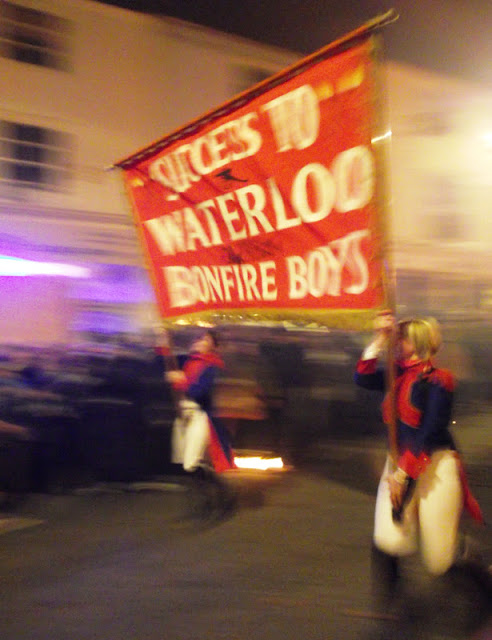
These were suppressed by Oliver Cromwell, but reappeared upon the Restoration. The celebrations faded towards the end of the eighteenth century, yet grew once more in the 1820s. In 1847 the Riot Act was read to the bonfire boys, who were banished to Wallands Park, then outside the town. They returned to march through the town again in 1850, in response to a Papal Bull asserting the re-establishment of a Catholic hierarchy in England.

In order to preserve the ability to march in the town, the bonfire boys capitulated, and organised so as to control riotous behaviour. Lewes (now Borough) Bonfire Society and Cliffe Bonfire Society – Cliffe was then a separate borough – both formed in 1853. There are now seven Lewes bonfire societies, six of which process with flaming torches through the town on the same night.

Each society parades through its own quarter, and all bar Cliffe and South Street then march down the High Street. The five principal societies make, from wire and papier-mâché, a tableau reflecting topical dislikes, in most cases processed through the town before heading for destruction at the relevant bonfire and firework site. The societies return to their headquarters for bonfire prayers, broadsides against authority and current bogey-men.

Bonfire is a tradition, but a flexible one. Those parading wear either smuggler outfits – banded Guernseys, a different colour combination for each society, and white trousers – or ‘pioneer’ costumes, including Vikings and Moors for Cliffe, Zulus and Tudors for Borough. Since 1858 Bonfire has also commemorated the Lewes Martyrs, 17 Protestants burnt at the stake between 1555 and 1557. In more recent times its purpose has been extended to honour those killed in war, the processions halting at the town’s war memorial.
1 comment:
Love those burning letters!
Post a Comment